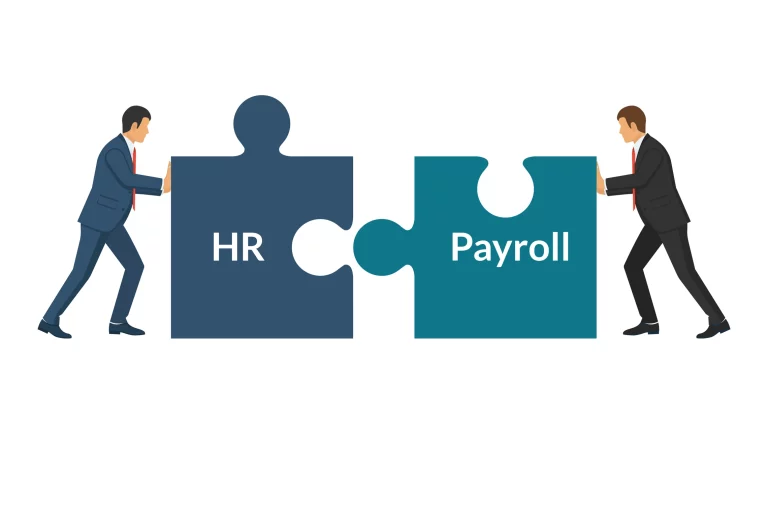Multi-Techno Integrated Solution

Table of Contents
Toggle2024 HR and Payroll Evolution: Maximizing Efficiency through ERP Integration
In today’s fast-paced business environment, organizations are constantly seeking ways to streamline their operations and improve efficiency. Human resources (HR) and payroll processes are vital functions within any organization, and integrating them with an Enterprise Resource Planning (ERP) system can bring significant benefits. ERP integration enables seamless data flow, eliminates redundant tasks, and enhances overall productivity. In this article, we will explore the advantages of integrating HR and Payroll Processes with an ERP System and how it can revolutionize the way businesses manage their workforce.
Introduction to HR and Payroll Integration
HR and payroll departments play a crucial role in managing employees’ information, tracking time and attendance, processing payroll, and ensuring compliance with labor regulations. However, many organizations still rely on disparate systems and manual processes for these functions, which can be time-consuming, error-prone, and inefficient. ERP integration offers a solution by centralizing and automating HR and payroll processes, resulting in streamlined operations and improved accuracy.
Benefits of ERP Integration for HR and Payroll
Seamless Data Flow:
Integrating HR and payroll processes with an ERP system ensures seamless data flow between different departments and eliminates the need for manual data entry. Employee information, such as personal details, attendance records, leave balances, and performance evaluations, can be entered once and shared across relevant modules, reducing data redundancy and minimizing the risk of errors. This integration allows HR and payroll teams to access real-time, up-to-date information, facilitating better decision-making and enhancing overall efficiency.
Time and Attendance Management
Tracking employee attendance and managing time-off requests can be a time-consuming task for HR and payroll departments. With ERP integration, organizations can automate these processes by implementing biometric or swipe card systems that directly feed data into the ERP system. This integration eliminates the need for manual timesheets, reduces administrative overhead, and ensures accurate calculation of employee hours, overtime, and leave balances.
Selecting an ERP System for HR and Payroll Integration.
When selecting an ERP system for integrating HR and payroll processes, organizations should consider the following factors:
Functionality
Choose an ERP system that offers comprehensive HR and payroll modules with features specific to your organization’s requirements. The system should support core HR functions such as employee records management, recruitment, performance evaluation, and training, as well as payroll-specific features like tax calculations, benefits administration, and compliance reporting.
Integration Capabilities
Ensure that the ERP system seamlessly integrates with other critical systems, such as time and attendance management, leave management and accounting software. Integration capabilities should extend to data synchronization, automated workflows, and real-time updates between different modules.
Scalability and Flexibility
Select an ERP system that can accommodate your organization’s growth and changing needs. The system should be scalable enough to handle an increasing number of employees, while also allowing for customization and configuration to adapt to specific HR and payroll processes.
User-Friendliness
Consider the usability and user-friendliness of the ERP system, as it will be utilized by HR and payroll teams on a daily basis. The system should have an intuitive interface, easy navigation, and provide relevant training and support to ensure successful adoption.
Payroll Processing
Processing payroll involves numerous complex calculations, including salary deductions, tax withholdings, and benefit contributions. Integrating payroll with an ERP system simplifies this process by automatically retrieving accurate employee data and applying predefined payroll rules. The system can generate pay slips, calculate taxes, and initiate direct deposits, saving time and reducing the likelihood of errors. Furthermore, integration with tax filing systems ensures compliance with legal requirements, minimizing the risk of penalties or legal complications.
Employee Self-Service
ERP integration empowers employees by providing self-service portals where they can access and update their personal information, view payslips, submit time-off requests, and access company policies. This self-service functionality reduces the administrative burden on HR staff, increases employee satisfaction, and fosters a culture of transparency and empowerment within the organization.
Implementation and Adoption Challenges
While ERP Integration brings numerous benefits, it is essential to acknowledge the challenges that organizations may face during the implementation and adoption process. Some common challenges include:
Change Management
Implementing ERP integration requires organizations to change their existing processes and workflows. Resistance to change and lack of employee buy-in can hinder successful adoption. To mitigate these challenges, organizations should communicate the benefits of ERP integration, provide comprehensive training, and involve employees in the decision-making process.
Data Migration and Cleansing
Migrating data from legacy systems to the new ERP system can be a complex task. It is crucial to ensure data accuracy, consistency, and integrity during the migration process. Organizations should invest time and resources in data cleansing, mapping, and validation to avoid data-related issues in the future.
System Integration
Integrating the ERP system with other existing systems, such as time and attendance or accounting software, requires careful planning and coordination. Organizations should work closely with their IT teams and ERP vendors to ensure seamless data integration and synchronization.
Conclusion
Integrating HR and payroll processes with an ERP system can revolutionize the way organizations manage their workforce. The seamless data flow, automation of time and attendance management, simplified payroll processing, and employee self-service capabilities result in streamlined operations, increased efficiency, and improved accuracy. However, organizations must carefully select an ERP system that aligns with their specific requirements and invest in change management and training to ensure successful adoption. With the right ERP Integration Strategy, organizations can unlock the full potential of their HR and payroll processes and drive overall business success.
Best cloud ERP software solution

About Us
ERP software and systems are designed and implemented by Multi-Techno, a registered company. By combining data from financials, sales, CRM, inventories, and operations, businesses can increase productivity, make better decisions, and increase profitability with the aid of our ERP System, a single, integrated software platform.
Quick Links
Contact Us
Office # 100, 101 Second Floor Kohinoor 1, Faisalabad, Pakistan
